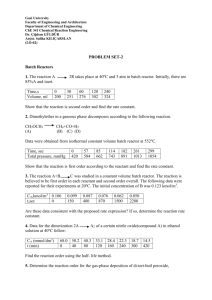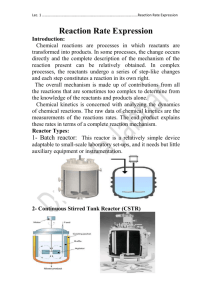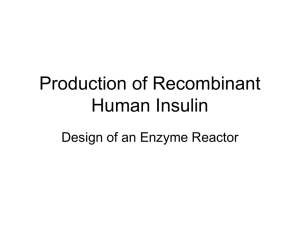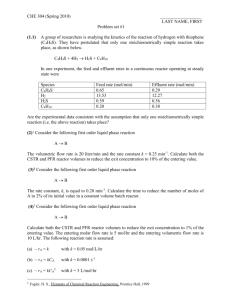pubdoc_10_23994_348
advertisement
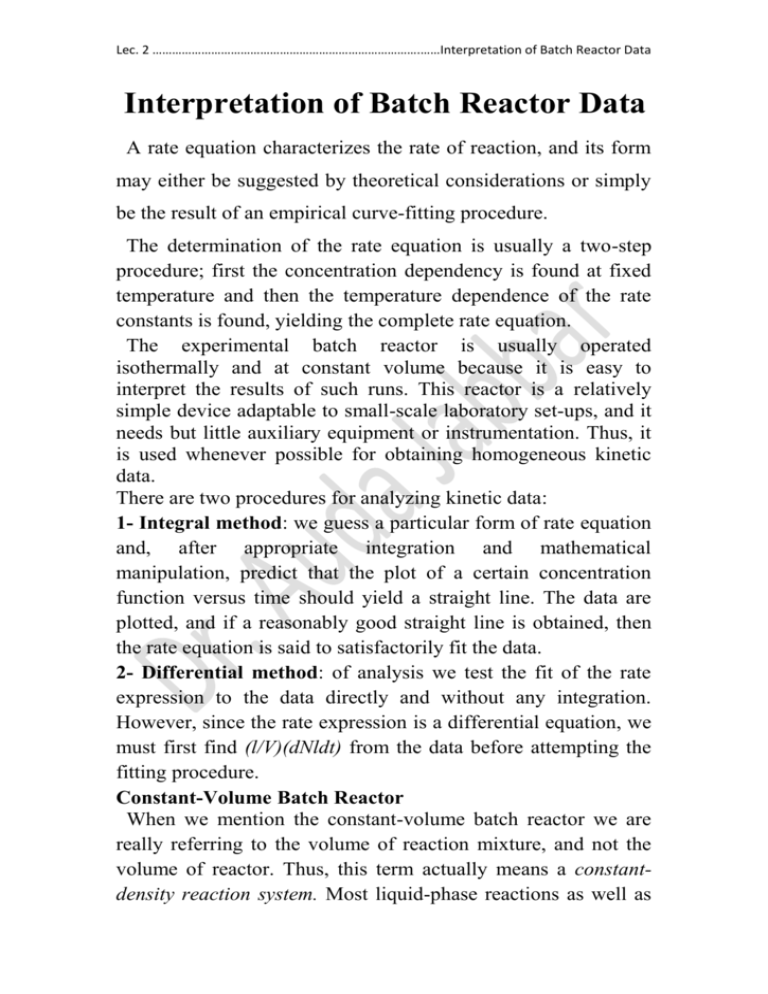
Lec. 2 ……………………………………………………………………….……Interpretation of Batch Reactor Data Interpretation of Batch Reactor Data A rate equation characterizes the rate of reaction, and its form may either be suggested by theoretical considerations or simply be the result of an empirical curve-fitting procedure. The determination of the rate equation is usually a two-step procedure; first the concentration dependency is found at fixed temperature and then the temperature dependence of the rate constants is found, yielding the complete rate equation. The experimental batch reactor is usually operated isothermally and at constant volume because it is easy to interpret the results of such runs. This reactor is a relatively simple device adaptable to small-scale laboratory set-ups, and it needs but little auxiliary equipment or instrumentation. Thus, it is used whenever possible for obtaining homogeneous kinetic data. There are two procedures for analyzing kinetic data: 1- Integral method: we guess a particular form of rate equation and, after appropriate integration and mathematical manipulation, predict that the plot of a certain concentration function versus time should yield a straight line. The data are plotted, and if a reasonably good straight line is obtained, then the rate equation is said to satisfactorily fit the data. 2- Differential method: of analysis we test the fit of the rate expression to the data directly and without any integration. However, since the rate expression is a differential equation, we must first find (l/V)(dNldt) from the data before attempting the fitting procedure. Constant-Volume Batch Reactor When we mention the constant-volume batch reactor we are really referring to the volume of reaction mixture, and not the volume of reactor. Thus, this term actually means a constantdensity reaction system. Most liquid-phase reactions as well as Lec. 2 ……………………………………………………………………….……Interpretation of Batch Reactor Data all gas-phase reactions occurring in a constant-volume bomb fall in this class. In a constant-volume system the measure of reaction rate of component i becomes: Thus, the rate of reaction of any component is given by the rate of change of its concentration or partial pressure. For gas reactions with changing numbers of moles, a simple way of finding the reaction rate is to follow the change in total pressure µ of the system. Analysis of Total Pressure Data Obtained in a ConstantVolume System. For isothermal gas reactions where the number of moles of material changes during reaction, let us develop the general expression which relates the changing total pressure of the system µ to the changing concentration or partial pressure of any of the reaction components. Write the general stoichiometric equation, and under each term indicate the number of moles of that component: Lec. 2 ……………………………………………………………………….……Interpretation of Batch Reactor Data The Conversion: Suppose that NAo is the initial amount of A in the reactor at time t = 0, and that NA is the amount present at time t. Then the conversion of A in the constant volume system is given by: Integral Method of Analysis of Data: Lec. 2 ……………………………………………………………………….……Interpretation of Batch Reactor Data Irreversible Bimolecular-Type Second-Order Reactions: Consider the reaction: Lec. 2 ……………………………………………………………………….……Interpretation of Batch Reactor Data Figure 3.2 shows two equivalent ways of obtaining a linear plot between the concentration function and time for this secondorder rate law. Lec. 2 ……………………………………………………………………….……Interpretation of Batch Reactor Data For the second-order reaction with equal initial concentrations of A and B, or for the reaction: The value of n which minimizes the variation in k is the desired value of n. Lec. 2 ……………………………………………………………………….……Interpretation of Batch Reactor Data Zero-Order Reactions: A reaction is of zero order when the rate of reaction is independent of the concentration of materials; thus: Which means that the conversion is proportional to time, as shown in Fig. 3.4. Figure 3.4 Test for a zero-order reaction, or rate equation, Eq. 30.

